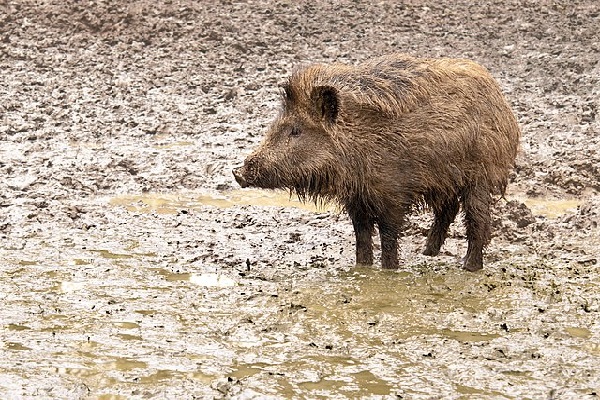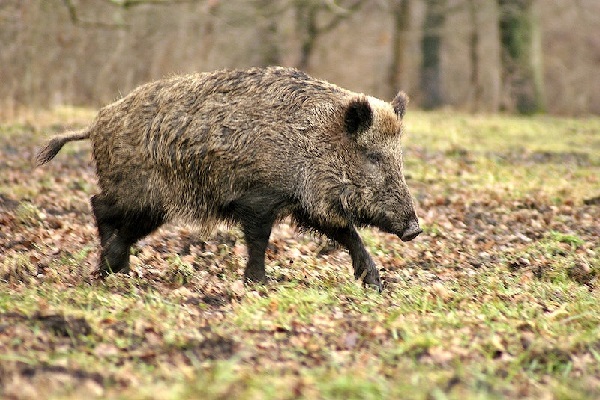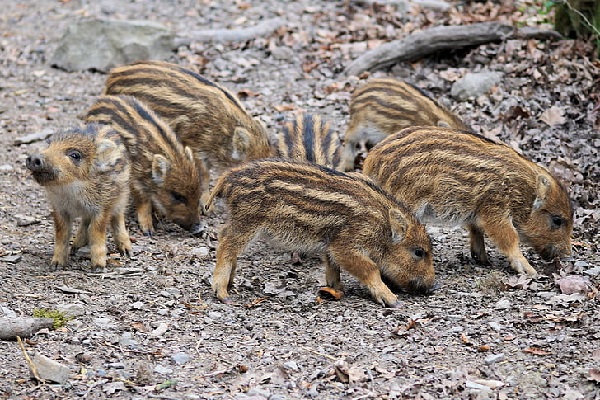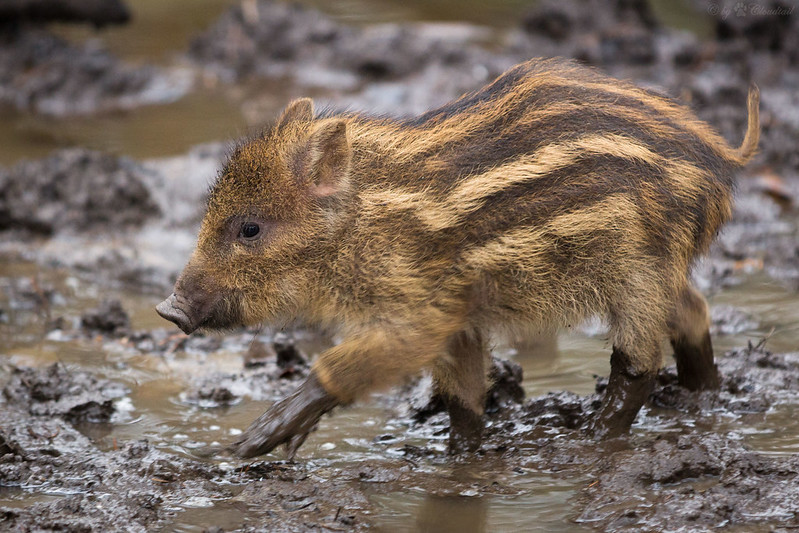
11/28/2022 5 minute read
Understanding the Gestation Period of Wild Boars
Wild boars are an important animal species that belong to the pig family, along with domestic pigs. They are native to many parts of the world, including Europe, Asia, and Africa. However, they have also been introduced to many other regions as an invasive species, where they can cause significant damage to native ecosystems.
To better understand the reproductive biology of wild boars, it is important to examine their gestation period, which is the time between fertilization and birth. This can vary depending on factors such as age, nutrition, and environment. Understanding the gestation period of wild boars can also provide insight into the reproductive biology of domestic pigs, as they share many similar traits and behaviors. By studying what is the gestation period of a wild boar, we can gain a deeper understanding of the reproduction and population dynamics of these fascinating animals.

Reproductive Cycle of Wild Boars
Wild boars have a reproductive cycle that is closely tied to their natural environment, including changes in daylight, temperature, and food availability. The breeding season for wild boars typically occurs in the fall or winter and is triggered by a decrease in daylight hours. During this time, male boars become sexually mature and compete with each other for access to female boars, who are also in estrus.
The reproductive cycle of wild boars can vary depending on factors such as nutrition, age, weight, and social behavior. Female wild boars typically become sexually mature between 6 and 12 months of age and can have multiple litters per year. However, they may delay breeding if environmental conditions are not favorable or if resources are limited. Male wild boars also exhibit social behavior, such as fighting and marking their territory, to establish dominance and improve their chances of mating.
The reproductive cycle of wild boars has important implications for the management of both wild and domestic pig populations. By understanding the timing and frequency of breeding, we can develop more effective strategies for population control and breeding programs. Additionally, studying the reproductive biology of wild boars can provide insights into the evolution and behavior of pigs as a species.

Gestation Period of Wild Boars
The gestation period of wild boars is an important aspect of their reproductive biology. Like domestic pigs, wild boars have a relatively short gestation period, which lasts for approximately 3 months, 3 weeks, and 3 days. During this time, the female boar carries her developing offspring in her uterus, providing them with the nutrients and protection they need to grow and develop.
After the gestation period, the sow or the female boar gives birth to a litter of newborn baby boars, which are called piglets. Wild boars can give birth to large litters of up to 10 or more piglets, although litter size can vary depending on factors such as age and nutrition. Once the piglets are born, they rely on their mother’s milk for several weeks before becoming fully weaned.
The gestation period of wild boars is an important factor to consider when managing both wild and domestic pig populations. By understanding the timing and duration of the pig gestation period, farmers and conservationists can develop better breeding and population control strategies. Additionally, studying the gestation period of wild boars can provide insights into the evolution and reproductive biology of pigs as a species.

Factors that Affect the Gestation Period of Wild Boars
The gestation period of wild boars can be influenced by several factors. One of the most important factors is the natural habitat of the wild boar, which can impact the availability and quality of food and water resources. Adequate nutrition and hydration during gestation are critical for the healthy development of fetal pigs, and changes in these factors can impact the length and outcome of the gestation period.
Other factors that can affect the gestation period of wild boars include age and health status of the female boar, as well as the timing and frequency of breeding. Older or less healthy females may experience longer or more difficult pregnancies, while younger females may have more successful pregnancies. Additionally, the timing and frequency of breeding can impact the size and health of litters, as well as the overall reproductive success of wild boar populations.
In some cases, feral hogs may also have longer gestation periods than their wild counterparts, which can impact their reproductive success and ability to compete with native wildlife. Understanding the factors that affect the gestation period of wild boars is important for managing both wild and feral pig populations, as well as for conserving the natural habitats and biodiversity of these important animal species.
Role of Hormones in Wild Boar Reproduction
Hormones play a critical role in the reproductive cycle of wild boars, especially in the regulation of the estrous cycle. The estrous cycle is the period of sexual receptivity in female pigs, during which they are most likely to conceive. The cycle is regulated by a complex interplay of hormones, including follicle-stimulating hormone (FSH), luteinizing hormone (LH), estrogen, and progesterone.
In wild boars, the estrous cycle is influenced by a variety of environmental and social factors, including changes in daylight, temperature, and food availability. For example, female wild boars living in wooded forests with limited access to food resources may delay the onset of the estrous cycle to conserve energy and resources. Additionally, male wild boars play an important role in stimulating and regulating the estrous cycle through pheromone signaling and other social behaviors.
The role of hormones in wild boar reproduction has important implications for the conservation and management of both wild and feral pig populations. By understanding the mechanisms that regulate the estrous cycle and other aspects of wild boar reproduction, we can develop more effective strategies for population control and breeding programs. Additionally, studying the hormonal regulation of wild boar reproduction can provide insights into the evolution and reproductive biology of pigs as a species, as well as their interactions with other animals in their natural habitats.
Need Help With Wild Hogs On Your Property?
Are you tired of wild hogs trampling through your yard and destroying your green plants and small rodents? Fear not, because AAAC Wildlife Removal Services is here to help you take back control of your property! Our team of experts specializes in the humane and effective removal of wild hogs, no matter the size of the infestation.
Our services are fast, friendly, and always professional. We understand that dealing with wild hogs can be a daunting task, but our team has the expertise and knowledge to get the job done quickly and safely. With our help, you can say goodbye to the hassle of dealing with wild hogs, dense vegetation, and all the other challenges that come with sharing your property with these feisty animals.
So if you want to reclaim your property and protect your green plants and small rodents from wild hog damage, don’t hesitate to give AAAC Wildlife Removal Services a call. Our team is ready and waiting to help you with all your wild hog removal needs!
Final Thoughts
Wild boars are fascinating creatures with a unique reproductive cycle that is influenced by a wide range of environmental and social factors. From the role of hormones in regulating the estrous cycle to the factors that affect the gestation period, there is much to learn about these intelligent and adaptable animals.
While dealing with wild hogs on your property can be a challenge, it doesn’t have to be a chore. With the help of professional removal services like AAAC Wildlife Removal Services, you can protect your property and enjoy the beautiful green plants and small rodents that make your yard a special place. So let’s embrace the wildness of these animals and work to find the balance that allows us to coexist in harmony with them. After all, life is more fun when we appreciate and respect the diversity of the natural world around us!







